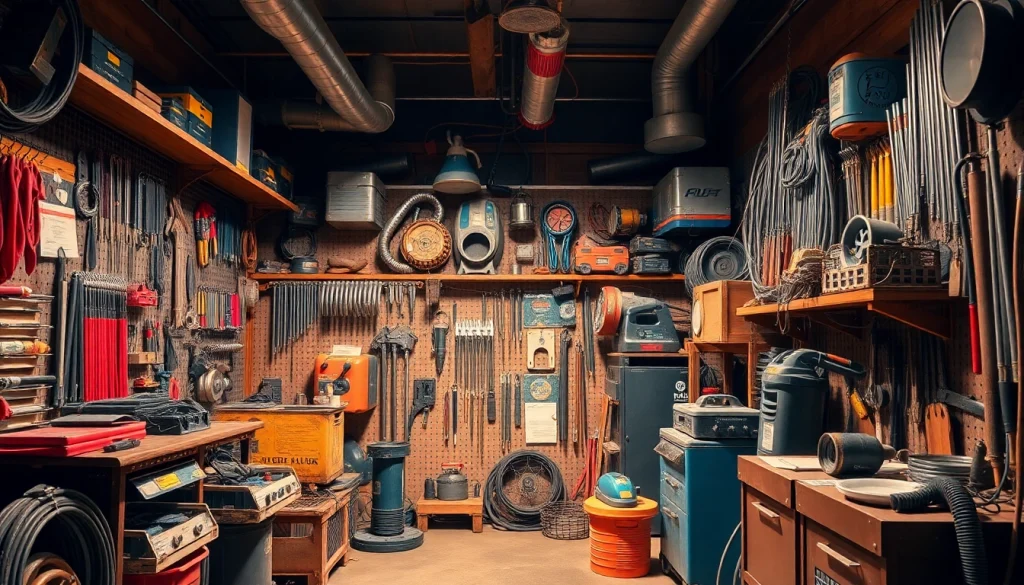Top Welding Supplies for Every Project: Quality Tools at Competitive Prices

Understanding Welding Supplies
Welding is a vital process in construction, manufacturing, and various industrial fields. It forms strong, durable joints between materials and is essential for building structures, vehicles, and even everyday products. To achieve efficient and quality welding, having the right welding supplies is crucial. This article will extensively explore essential welding equipment, help you choose the right tools for your needs, emphasize maintenance practices, and guide you on where to buy quality supplies.
Overview of Essential Welding Tools
Welding tools are divided into several categories, each serving a specific purpose. Understanding these tools is essential for both novice and experienced welders.
- Welding Machines: These are the core tools required to perform welding tasks. Common types include MIG (Metal Inert Gas), TIG (Tungsten Inert Gas), and Stick welders. Each has its unique application, depending on the type of materials being welded.
- Welding Helmets: Safety should always be a priority in welding. A reliable welding helmet protects your eyes and face from harmful UV rays and sparks. Options include auto-darkening helmets that adapt to brightness changes.
- Welding Rods and Wires: These consumables are essential to the welding process. The choice between rods or wires, such as MIG wires or TIG rods, impacts the quality of the weld, depending on the metal type and thickness.
- Protective Gear: In addition to helmets, gloves, leather aprons, and steel-toed boots are vital for welder safety. Protective gear prevents injuries from electric shock, heat, and flying debris.
Different Types of Welding Equipment
Each type of welding machine comes with its specific strengths, depending on your project requirements:
- MIG Welders: Known for their ease of use, MIG welders are ideal for beginners and are versatile for various materials from thin sheet metal to thicker sections.
- TIG Welders: They offer high-quality welds due to better control over the heat input and the ability to use a filler rod manually, making them suitable for welding harder metals like aluminum.
- Stick Welders: Effective for outdoor conditions, they work on dirty or rusty metals, making them popular in construction sites. However, they can be less precise than MIG or TIG machines.
Common Welding Accessories to Enhance Your Setup
To maximize efficiency and ensure quality work, several accessories can enhance your welding setup:
- Chipping Hammers: Used to remove slag or impurities after welding, ensuring a clean finish.
- Welding Magnets: Handy for positioning pieces securely while you weld.
- Clamps: Essential for holding materials in place.
- Wire Brushes: Utilized for cleaning welds and prep surfaces before welding.
Choosing the Right Welding Supplies for Your Needs
Selecting the appropriate welding supplies is crucial to the success of your projects. Various factors need to be considered to ensure that you meet your specific requirements effectively.
Factors to Consider When Selecting Tools
Several key elements influence your choice of welding supplies:
- Material Type: Different materials, such as steel, aluminum, or copper, require specific welding techniques and equipment.
- Project Size: The scale of your projects will dictate the type of welder you need. Larger operations might require industrial machines, while smaller projects can often be handled with portable units.
- Experience Level: Beginners may favor user-friendly equipment like MIG welders, while seasoned professionals may opt for more advanced machines.
- Working Environment: Welding indoors can demand different equipment compared to outdoor settings, particularly regarding ventilation and safety.
Understanding your Welding Technique and Material Requirements
Your choice of welding technique affects the tools and materials required. Here’s a brief overview of the most common techniques:
- MIG Welding:
- Preferred for its speed and adaptability across various metals. It’s particularly effective for projects requiring continuous welds.
- TIG Welding:
- This requires greater skill but delivers exceptionally clean and precise welds, ideal for intricate work.
- Stick Welding:
- While it can be more challenging to master, stick welding is perfect for agricultural work and repairs on rough surfaces or thick materials.
Budgeting for Welding Supplies: Cost vs. Quality
Balancing your budget with quality is essential. While it might be tempting to opt for cheaper products, investing in high-quality welding supplies often leads to better results and longevity:
- Durability: Quality equipment tends to last longer and perform better, justifying a higher initial investment.
- Welding Performance: More expensive tools often come with advanced technology and features that improve weld quality.
- Long-Term Savings: Investing in superior equipment can reduce the costs of repairs and replacements over time.
Maintenance and Care for Welding Equipment
Care and maintenance of your welding supplies are critical for ensuring their longevity and enhancing performance. Proper upkeep can prevent costly repairs and replacements later.
Routine Maintenance Tips for Longevity
Routine maintenance encompasses several actions, including:
- Cleaning: Regularly clean your welding machine, helmets, and other tools to remove dust, debris, and corrosion.
- Inspecting Cables: Check all cables and connections for damage or wear. Replacing them before they fail can save you from interruptions during work.
- Calibration: Periodically calibrate your welding machine settings to ensure optimal performance.
How to Properly Store Your Welding Supplies
The way you store your welding supplies greatly influences their condition:
- Dry Environment: Store your welding machines and accessories in a dry place to prevent rust and damage.
- Temperature Control: Some welding materials can degrade in extreme temperatures, so aim for a stable environment.
- Organized Storage: Use toolboxes, racks, or designated areas for storing tools and supplies to prevent damage and make retrieval easier.
Identifying When it’s Time to Replace Equipment
Knowing when to replace your equipment is crucial for maintaining productivity. Keep an eye out for the following:
- Signs of Wear: Look for visible damage on tools that may compromise safety and performance.
- Performance Decline: If your welding machine is not performing as it used to, it might be time for a professional assessment or replacement.
- Aging Equipment: Older machines may not meet current safety standards or efficiency expectations.
Where to Buy Welding Supplies
When looking for welding supplies, you have several options. Understanding the pros and cons of each can help you make an informed choice.
Online vs. Local Supply Stores: Pros and Cons
Both purchasing avenues have benefits:
- Online Stores:
- Advantages include a wider selection, potentially lower prices, and ease of comparing different brands.
- On the downside, you lose the ability to physically inspect the tools before purchase.
- Local Supply Stores:
- These provide the advantage of immediate product access and the ability to ask questions and seek advice.
- However, they may have a smaller selection and potentially higher prices.
Top Brands to Consider for Quality Welding Supplies
Not all brands are created equal. Here are some reputable companies known for their quality welding supplies:
- Miller Electric: Renowned for reliability and innovation across various welding machines and accessories.
- Lincoln Electric: Offers an extensive range of welding equipment, perfect for both professionals and hobbyists.
- ESAB: Known for high-performance welding consumables and cutting equipment.
- Hobart: Simplifies the welding process for beginners with user-friendly machines.
Tips for Finding the Best Deals on Equipment
Finding great deals can significantly reduce your welding equipment costs:
- Watch for Sales: Many suppliers offer seasonal sales or promotions; signing up for newsletters can keep you informed.
- Buy in Bulk: Purchasing consumables like rods or wires in larger quantities often yields discounts.
- Consider Refurbished Tools: Certified refurbished equipment can provide the benefits of high-quality tools at a lower price.
Advanced Welding Supplies and Accessories
As your skills advance or your projects become more demanding, consider upgrading your welding supplies with professional-grade tools and accessories.
Upgrading Your Setup with Professional Tools
Professional-grade equipment can enhance your welding capabilities significantly:
- Multi-Process Welders: These machines combine several types of welding techniques in one unit, providing versatility for different projects.
- Advanced Gas Flow Controls: Improved gas flow systems can enhance the stability and quality of your welds, particularly with TIG welding.
- Fume Extractors: Investing in a quality fume extraction system is essential for maintaining a safe working environment.
The Importance of Safety Gear in Welding
Safety gear is non-negotiable for welders. Protecting yourself from the hazards of welding can save lives:
- Proper Helmets: Must meet safety standards for UV protection.
- High-Quality Gloves: Choose heat-resistant gloves that offer dexterity for handling tools.
- Protective Clothing: Flame-retardant clothing and full-body suits minimize burn risks.
Innovations in Welding Equipment and Supplies
Welding technology is constantly advancing, improving efficiency and quality:
- Welding Robots: These automated systems enhance precision and speed, especially in manufacturing settings.
- Smart Welding Systems: Newer machines feature sensors and smart technology for precise control over the welding process.
- Augmented Reality Training: Innovative training tools using AR can help beginners learn welding techniques effectively.







